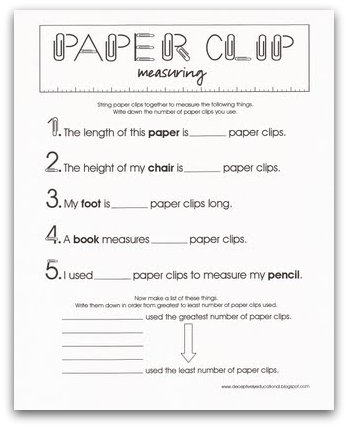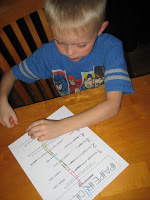It’s happening – homework! Soon after my son began first
grade, he started toting home a list of five words each week. I’ll admit, I
wasn’t sure what to do with them. After all, my son could read them without any
difficulty and so I just tossed the lists in our mail/bills/household paperwork
pile (please tell me we’re not the only family with one of those).
Then a friend whose boy is my son’s best friend enlightened
me. Just because my son could read those word-wall words, doesn’t mean he could
spell them. Yikes! After mentally beating myself up for a few days, I came up
with this little “reusable” activity so those weekly words could get practiced.
First, I made a dry-erase die. To do this, I created a
template with squares the same width (2 inches) as Scotch brand packaging tape. I printed it on sticker paper. Then I used post-it notes to mask off the flaps where I’d be
gluing the little box together (I didn't think the glue would stay adhered to the slick tape). I added the packaging tape and anywhere that
the tape overlapped a sticky note, I carefully lifted the edge of the note
and cut along the edge with an Exacto knife.
 Afterwards, I peeled the sticker paper's backing off, and stuck the template to the brown side of an empty cereal box I used for sturdiness. Then I cut the whole template out with that same Exacto
knife, using a ruler as a straight edge and a cutting board underneath to
protect my work surface.
Afterwards, I peeled the sticker paper's backing off, and stuck the template to the brown side of an empty cereal box I used for sturdiness. Then I cut the whole template out with that same Exacto
knife, using a ruler as a straight edge and a cutting board underneath to
protect my work surface.
Once it was cut out, I turned it over and used a ruler
and the backside of a butter knife to score the cardboard wherever folding was
necessary. Lastly I used my hot glue gun to glue the flaps one or two at a time
and folded the box together until the template became a cube. Voila! The tape
makes a perfect dry-erase surface!
 Next, I used Microsoft Publisher to create a worksheet that
has a grid where my son would record the words he rolled.
Next, I used Microsoft Publisher to create a worksheet that
has a grid where my son would record the words he rolled.
When my son got home from school, I wrote the words from the
list plus one more (die have six sides and I only had 5 words) with a fine-tip
dry-erase marker on the die. I also added the words across the
top of the worksheet.
Now all that was left to do was hand it over to my son.
Every time he rolled a word, he wrote it in the appropriate
column. When any one column was completely full, he was done. Surprisingly the dry-erase words held up well, without much smearing.
Download the die template and Roll & Write worksheet here.
My son had loads of fun with this and enjoyed predicting which word he would roll the most times. Whew! Now I can look his teacher in the eye!
















































